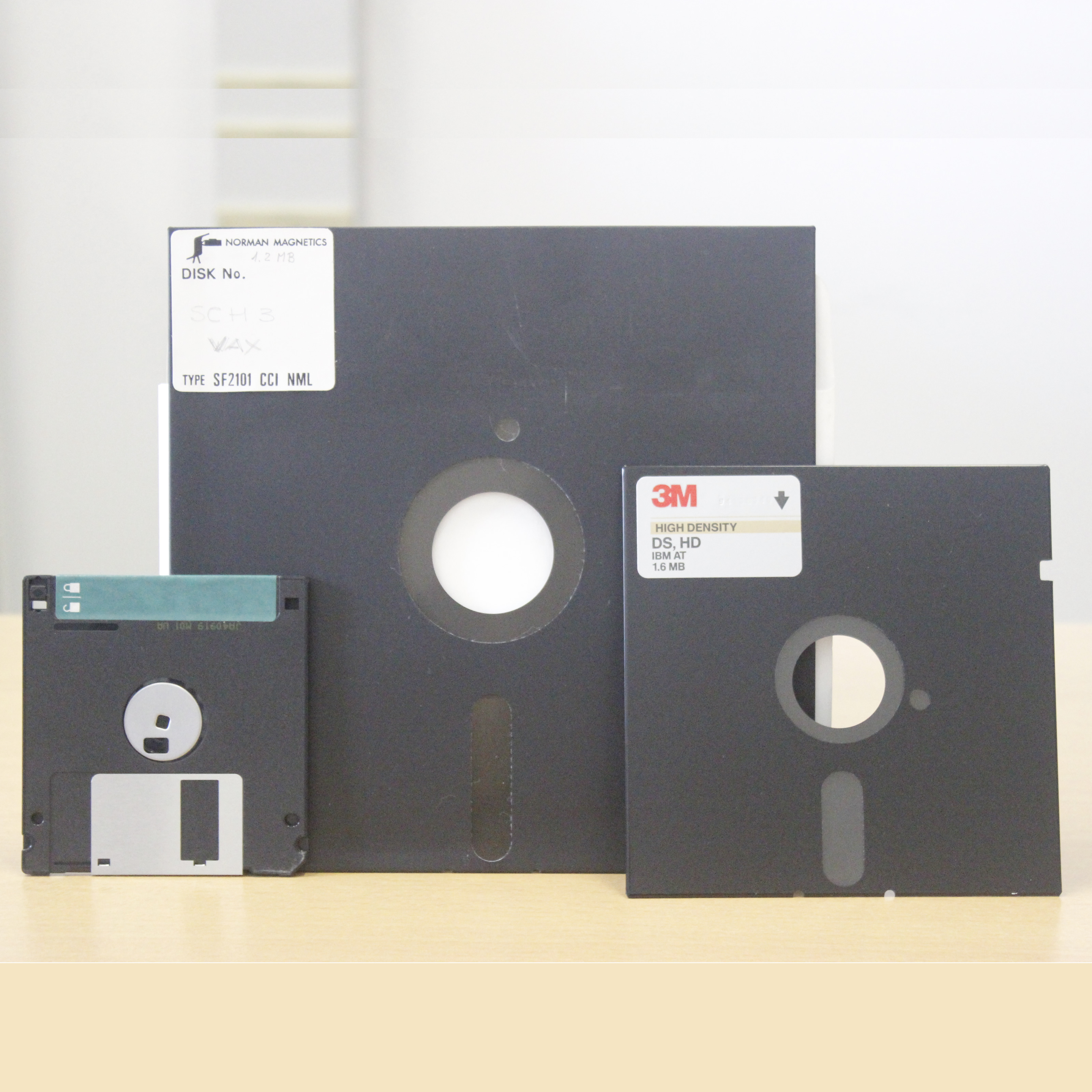
I floppy disk nacquero nel 1967 quando l’ingegnere fisico Alan Shugart, che nell’IBM ricopriva il ruolo di Direct Access Storage Product Manager, mise a punto un sistema semplice e poco costoso per caricare microcodice sui suoi mainframe System/370. Il risultato fu un disco di sola lettura, di 8 pollici (20 cm) di diametro, chiamato “memory disk”. La prima commercializzazione è avvenuta nel 1971.
Insights
A floppy disk is based on a principle very similar to that used in magnetic tapes. However, there is a fundamental difference between tape and disk: while magnetic tapes have sequential access (i.e. to get to a certain point of the tape you have to scroll through the entire previous part) the floppy disk, thanks to its circular structure, allows direct access and fast to data (to read a document, it is not necessary to read the media from the beginning as in the tape).
The main components of a floppy drive are the following:
• Heads: they perform the reading and writing information to disk, modifying its magnetization
• Drive motor: allows the disk to rotate
• Head motor: allows the heads to move along the radius of the disk
• Mechanical lever: allows the ejection of the disk and the coupling of the drive motor with the disk.
• Electronic card: drives the drive motors, encodes / decodes the signals written / read by the heads into information that can be understood by the computer.
The 8-inch floppies had a large circular hole in the center and a small oval opening on both sides of the plastic to allow the heads to read and write data. The magnetic media was spun through a motor shaft that entered the central hole.
A small notch on the right side of the floppy was used to identify if it was in read-only mode or if it could be written on. This was detected by a mechanical switch or a phototransistor. To protect the disc from writing, it was necessary to close the side notch with a small self-adhesive label.
Another pair of LEDs and phototransistors located near the center of the disc were used to detect a small hole in the disc and synchronize the recording system. read / write with disk rotation.
There were also disks provided with a series of holes used to identify individual sectors, these disks were called hard sectors as opposed to those with a single hole, called soft sectors. Inside, the disc was separated from the case by a layer of a particular fabric with the function of reducing the friction between the media and the external case and keeping it clean by blocking dust.
The external case was usually composed of a single section sheet, folded with glued or heat-sealed edges.